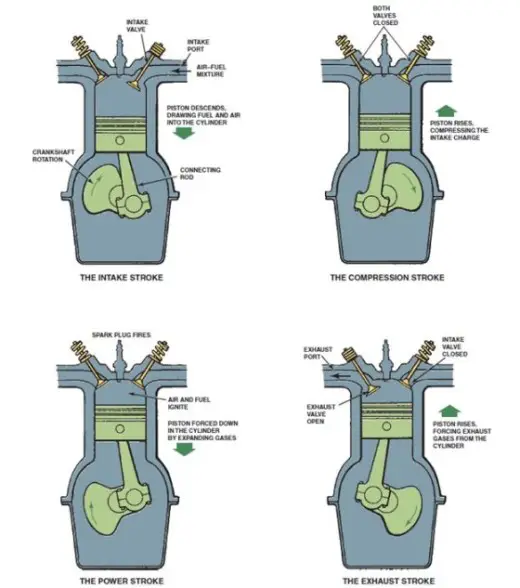

Welcome to ASE Certification Training Headquarters! We have everything you need to make your life easier as you begin your career as an Automotive Service Excellence Certified Master Mechanic. State specific training requirements, a step-by-step hiring process, potential employers, and interviews to help you get hired are just some of the helpful things you'll find here.
The first four-stroke cycle engine was developed by a German engineer, Nickolaus Otto, in 1876. Most automotive engines use the four-stroke cycle of events. The process begins by the starter motor rotating the engine until combustion takes place. The four-stroke cycle is repeated for each cylinder of the engine.
A piston that moves up and down, or reciprocates, in a cylinder can be seen in the following figure. The piston is attached to a crankshaft with a connecting rod. This arrangement allows the piston to reciprocate (move up and down) in the cylinder as the crankshaft rotates.

A cycle is a complete series of events that continually repeats. Most automobile engines use a four-stroke cycle.
Engine cycles are identified by the number of piston strokes required to complete the cycle. A piston stroke is a one-way piston movement either from top to bottom or bottom to top of the cylinder. During one stroke, the crankshaft rotates 180 degrees (1/2 revolution). A cycle is a complete series of events that continually repeats. Most automobile engines use a four-stroke cycle.
This sequence repeats as the engine rotates. To stop the engine, the electricity to the ignition system is shut off by the ignition switch, which stops the spark to the spark plugs. The combustion pressure developed in the combustion chamber at the correct time will push the piston downward to rotate the crankshaft.
Now that you’re familiar with the Four Stroke Cycle of Combustion Engines, try out our free Automotive Service Excellence Tests to see how much you know! Test your knowledge of automotive engines in order to Ace the A1 – Engine Repair or A8 – Engine Performance exams!